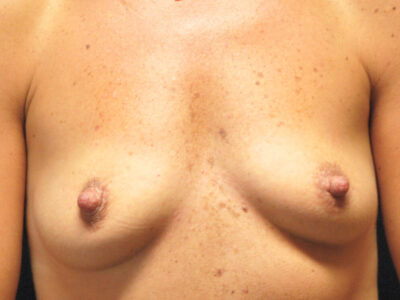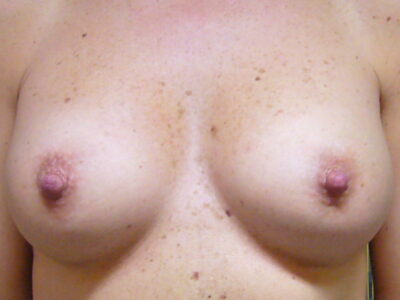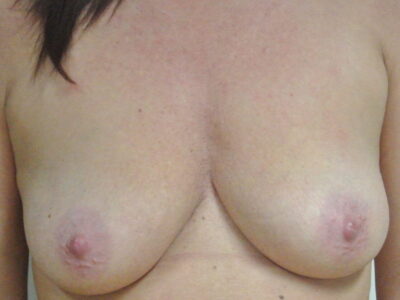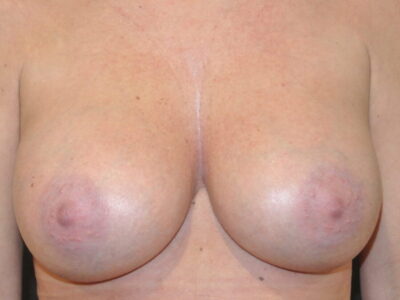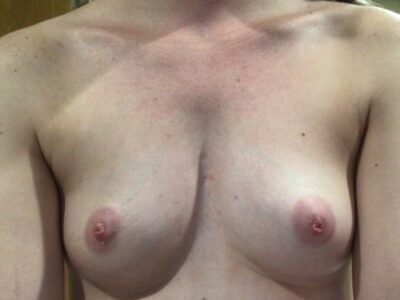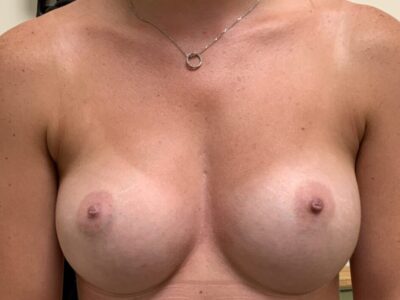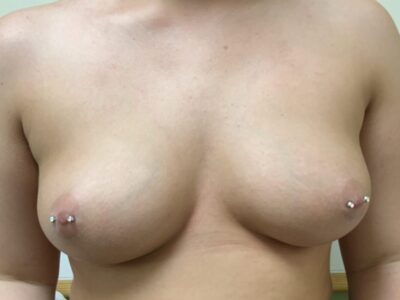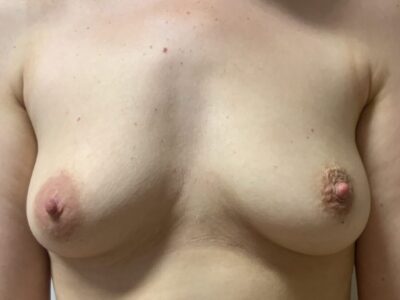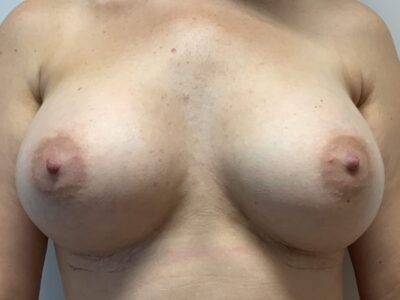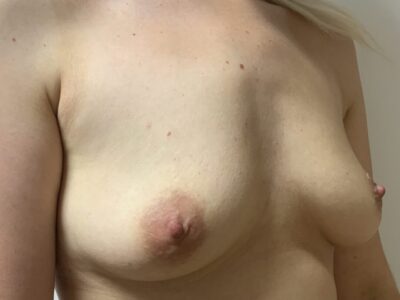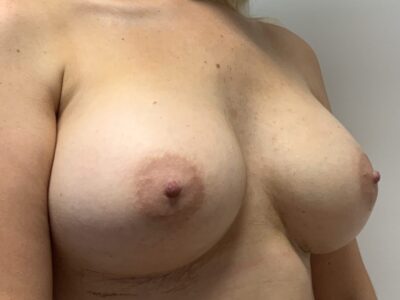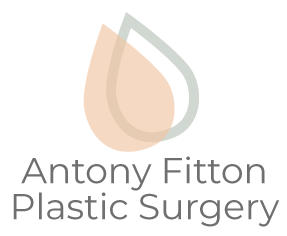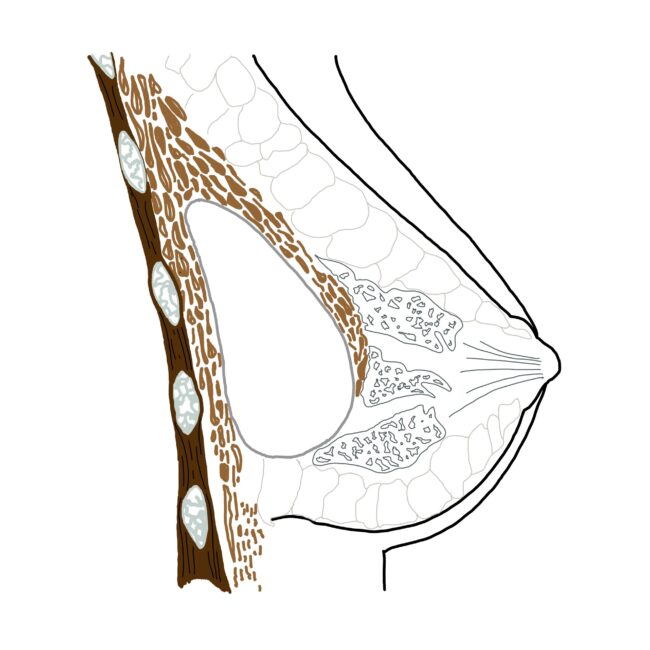
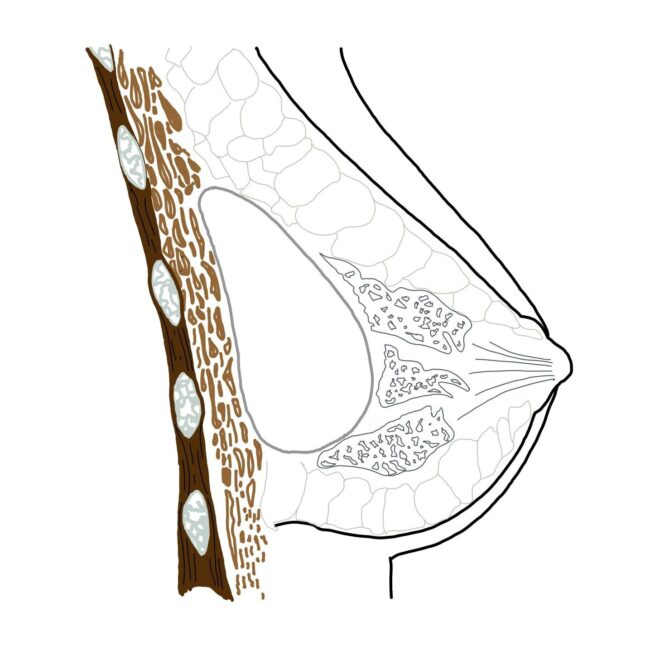
email: [email protected]
call: 07494 250277
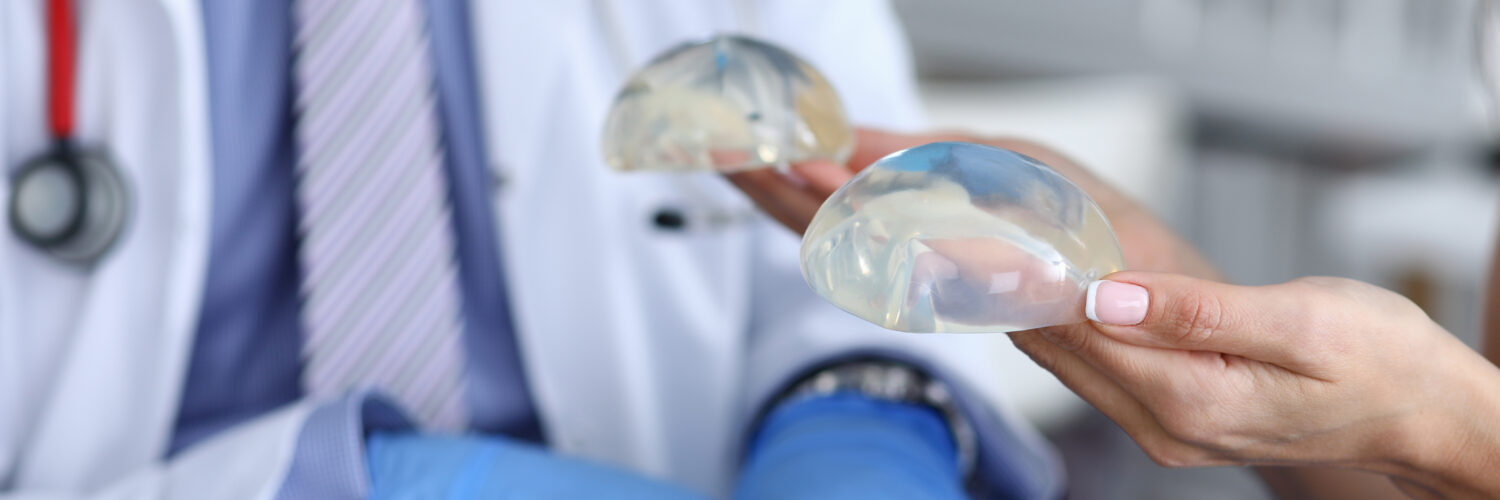
Are you unhappy with the size or shape of your breasts?
Many women choose to have breast enlargement or boob job surgery to boost body confidence and to feel comfortable with the size and shape of their breasts.
A breast enlargement, or boob job is an operation that restores, or gives new, shape and volume to the breast.
Implant based breast enlargement has courted controversy for several decades. Patients should be fully informed of these issues and risks before consenting to surgery.
Breast enlargement involves the placement of a specially engineered breast implant beneath the substance of the breast.
Breast implants can be inserted in one of two planes; either underneath the breast tissue (sub-mammary plane) or in a deep plane underneath the pectoral muscles on the chest wall (sub-muscular plane).
In thin patients the sub-muscular plane gives a far more natural appearance to the breast.
The decision as to where the implant is placed depends upon the surgeon’s judgement and the patient’s preference.
The usual incision is made in the infra-mammary fold, that is the crease between the breast and the chest wall on the other side.
The optimum breast implants size is decided following discussions and detailed measurements. An excellent way of assessing potential breast implants size is to use the “rice sizing” technique.
Mr Fitton will ask to see his patients on, at least two occasions before operating.


The most commonly used implants contain silicone. These may be round or anatomical (teardrop).
Over the decades there have been concerns that silicone breast implants cause certain diseases such as breast cancer and autoimmune conditions. Clinical studies have now confirmed that there is “No correlation between tissue silicone levels in patients with implants and autoimmune disease.” (Weinzweig, J., et al, 1998).
Other major studies have ruled out any association between silicone implants and 12 autoimmune diseases (Gabriel, S. E., et al, 1994) and therefore the risk of connective-tissue diseases and other disorders after breast implantation is negligible (Sánchez-Guerrero, J. et al. 1995).
The incidence of breast cancer among women who had silicone implant breast enlargement is no different than that of the general population (Bryant H and Brasher P, 1995).
Very recently a possible association between breast implants and anapaestic large cell lymphoma has been described. By August 2020 78 cases have been reported in the UK (https://www.gov.uk/guidance/breast-implants-and-anaplastic-large-cell-lymphoma-alcl). The risk of this is therefore extremely low (1 in 12000 patients) but all patients considering this operation should informed of this complication.
Modern implants have an extended lifespan but can still rupture. The risk of rupture is low (about 4% rupture within 4 years). It can be difficult to determine the integrity of a breast implant by clinical examination. Ultrasound or MRI scans are the most accurate means of assessing the state of the implant.
Breast enlargement is a relatively straightforward operation. It is Mr Fitton’s current practice to ask patients to stay the night following the operation to monitor recovery and ensure that there are no concerns (such as bleeding or haematoma) before discharge.
Breast implant sutures are soluble and the post-operative dressings are minimal.
We ask that the dressings and sutures be left undisturbed until the first outpatient visit 10 days after surgery. Any symptoms of fever, increasing pain, swelling and redness may herald an infection, in which case patients should contact the hospital for an immediate review.
Patients should expect only mild discomfort following the breast surgery. This is usually controllable with simple analgesics.
By the time of the first follow-up consultation, most patients’ discomfort has resolved and one should ordinarily be able to return to duties at work, although this depends on your occupation.
After a breast enlargement, you should wear some form of support sports-type bra for several weeks.
The breast enlargement operation may alter the sensation in your nipples. Most commonly, your nipples could feel numb or on rare occasions, become overly sensitive to such a degree that they cannot be touched.
In response to placing an implant into the breast a normal reaction or capsule forms. In a proportion of patients this capsule can contract causing the breast to feel firm and in some to become painful.
The chances of this happening are much lower with modern textured breast implants. Surgery to release or remove the capsule can be performed but invariably this is at an additional cost.
Most breast implant companies are offering free replacement of the implants in this situation but patients should be aware that this does not cover the cost of the operation itself.
In a thin patient, it is possible that the wrinkles in the implant would become visible externally. Likewise in thin patients, it is possible to feel the edge of a breast implant or the edge of a wrinkle. As long as this isn’t visible it should be of little concern. It is, however, important not to dismiss a newly felt lump in the breast. Any new lumps should be investigated to exclude other more serious causes.
As the female breast ages, it generally descends on the chest wall. This is called ptosis. If the implant descends with the breast tissue the appearance can be very natural. On occasions, however, the breast tissue can fall off the implant forming what is known as “the double bubble” appearance. This effect can also occur following pregnancy and is independent of breast-feeding. Correcting this appearance generally necessitates a mastopexy or uplift.
Silicone breast implants are radio-opaque. That means that X-rays cannot pass through them. This therefore impedes mammography. As long as the radiologist or mammography technician is aware that implants are present they can use different techniques and views to obtain the information they are looking for.
If there is any doubt the radiologist will request either an ultrasound or an MRI scan. It is likely in the fullness of time that high-definition ultrasound scans will replace conventional x-ray mammography.
Breast implants do not interfere with a patient’s ability to breastfeed.
Silicone will however be present in a mother’s milk. The silicon has not travelled directly from the implant into the milk ducts but is present in minute quantities in the bloodstream from which the milk is made. Silicon would get into the breast milk even if the implant had been placed in a buttock.
Silicon is ubiquitous. It is used in many hairsprays and furniture polishes as well as in the food industry. It is a very inert lubricant. The amount of silicon consumed by a baby that is being bottle-fed is far in excess of a baby being fed on breast milk from a mother who has breast implants.
There is no evidence to suggest that silicone in milk, in the concentrations found following breast augmentation is harmful to babies.
For information regarding breast implants visit:
http://www.bapras.org.uk/docs/default-source/alcl-guidance/25_11_final-joint-statement.pdf?sfvrsn=2
https://www.bapras.org.uk/public/patient-information/surgery-guides/breast-enlargement
